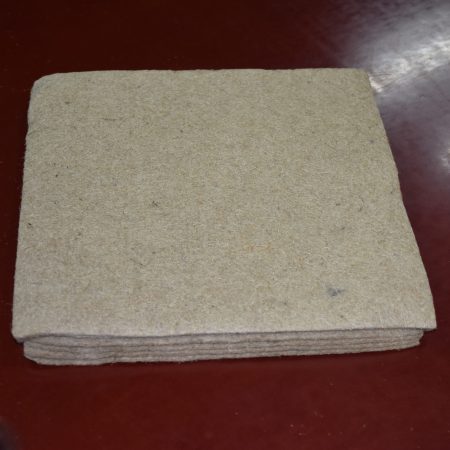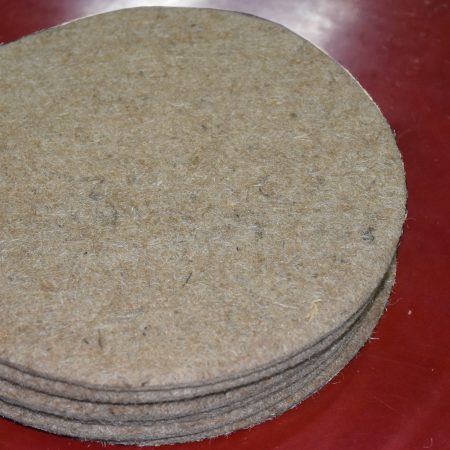Introduction:
Jute, one of the important natural fibers, holds second place in economic importance after cotton, used for industrial application in large amounts. It is a commodity on which millions of households depend for cash earnings. Jute is produced in enormous numbers in Bangladesh, India, Nepal, China & so on and so forth.
Jute is used mostly for the packaging market. It is the traditional application of jute. Except for this packaging purpose, Non-woven jute has many uses in different sectors. Non-woven jute is known as geo-textile.
The prime reasons for the growing market of Jute-Nonwovens:
- Nominal strength & Dimension stability
- Biodegradability & Eco-friendliness
- Higher moisture absorption characteristics
- Low cost
- Abundantly grown in Bangladesh
- Utilization of jute waste, i.e. Jute caddies.
Manufacturing Method:
Though there are various ways to manufacture Jute-nonwoven geotextiles, B. J. Geo-Textile Limited goes with the needle punch method. The rest of the technologies include stitch bonding, hot calendaring, hydro entanglement, hot air thermal bonding, and oven bonding.

Needle punched nonwoven technology is considered to be a forward technology & one of the promising alternatives suited to the jute geo-textile industry. Needle punch technology is very familiar to the jute industry in view of its high productivity & low wage component of the production cost associated with it.
Physical Properties of Jute Needle-punched Nonwoven:
Density & thickness play an important role in different potential applications. Ultimately these two characteristics govern many functional properties of non-woven. Such as thermal & noise insulation, water absorbency, resiliency, compressibility, etc. Needling density, depth of needle penetration, and fabric area density are found three most important parameters which affect the compression behavior of jute needle-punched nonwoven. The compressibility of fabric in terms of thickness loss is initially reduced with the increase in fabric weight, punch density, and depth of penetration, and after attaining a minimum value it starts increasing if the increase in these variables is continued further. The compression behavior of jute blend needle punched nonwoven showed an increase of thickness with an increase of fabric weight as shown in. This study also said that jute felt thickness reduces with the increase in the needed density and the percentage compression resilience of the jute felt increases with the increase in jute content in the blend.
The wettability of jute fiber is good among all the long vegetable fibers. The porous non-woven structure is expected to improve the water holding capacity of the fabric. A study reported that for a particular depth of needle penetration or for a particular oil percentage, with the increase in punch density extrinsic rate of absorption increases initially and then decreases.
Raw Material:
Jute industries can use 100% fresh jute or 100% caddies or mixing of fresh jute and caddies in a standard ratio according to the quality of caddies. One of the prominent companies in Bangladesh named B. J. Geo-Textile manufacturers world’s best jute felt, biodegradable mulch mat roll, nesting pad, tree weed mat, oil spill mat, seed germination pad maintaining fine & export quality.
Applications of Jute Non-woven:
- Agriculture & Horticulture:
Agricultural textiles are now widely used for the following end-uses:
- Mulch on seedbeds
- Mulching
- Weed protection
- Soil Conservation
2. Geo-textile:
Geo-textiles can meet technical & functional requirements for soil-related problems. Jute geo-textile finds its application in the area of civil engineering:
- Soft soil consolidation
- Surface soil erosion control in slopes & plains
- Canal Construction
3. Jute Bio-pots:
- Sustainable alternative to plastic
- Effective moisture management trains roots better
- Identical Growth rate


Global Market for Jute Items:
The global jute & jute like fibers market was estimated at $116 in 2020-21, growing by 31% against the previous year. Overall, consumption saw a relatively growing trend pattern. The most prominent rate of growth was recorded in 2020-21 with an increase of 6% year to year. Over the period under review, the global market hit record in 2020-21. Bangladesh currently exports jute-based goods to around 135 countries. During the same period, exports of jute sacks and bags rose by 30%, other products by 5%, and man-made filaments and staple fibers by 10%.
Conclusion:
Jute items like jute felt, nesting pad, jute geotextile, germination pad, mulch mats for trees, tree weed mats manufacturing companies are very few in number in Bangladesh. Though it’s very few in number but B.J. Geo-Textile Limited is capable of meeting the demand across the country & the demand beyond the national boundary. The demand for jute is high due to its biodegradable nature and the scope of using jute is expanding. The increased role of the private sector and the ability to move into new products whose demand is strong.
Private sector enterprises are typically more nimble than state-owned firms and faster in responding to emerging market demand.
Text-book economics has always told us this. The jute industry of Bangladesh has shown this in practice.
References:
- https://www.researchgate.net/publication/319183052_Jute_in_Technical_Textile
- http://article.sapub.org/10.5923.j.textile.20120105.02.html#Sec3
- https://www.tbsnews.net/economy/jute-exports-rise-record-31-fy21-291742
- https://archive.dhakatribune.com/business/2021/08/30/op-ed-is-bangladesh-s-jute-industry-really-declining
Written by-
Srayoshee Das
Coordinator, International Market

